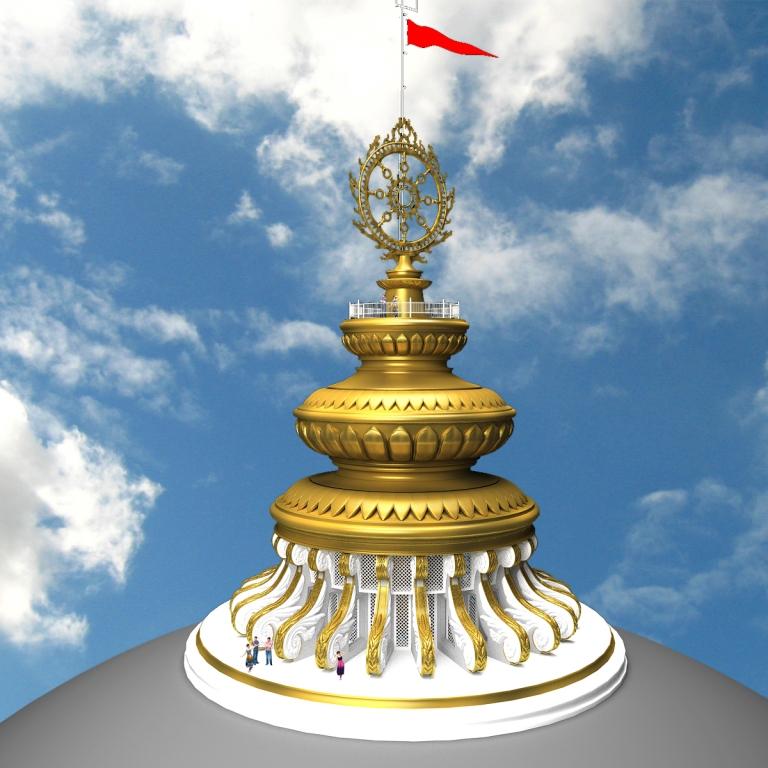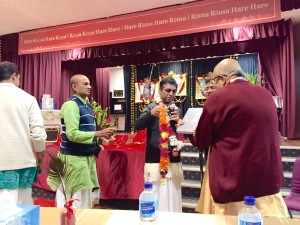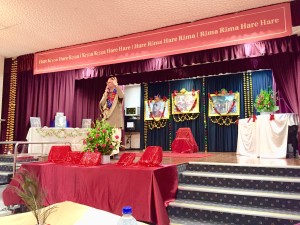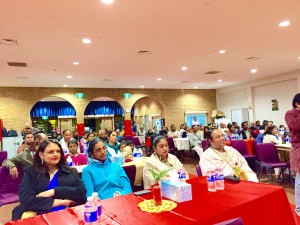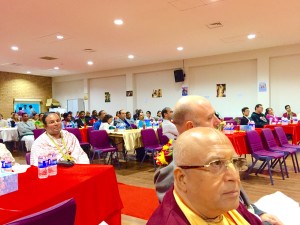I was really inspired to see how much interest there was in my article on chanting. There were a few consistent or excellent questions I heard amongst the responses, so I’ll try to reply to them.
About the Speed
I was surprised that a few people found it hard to believe that it is possible to chant rounds quickly (aiming for 3.5 minutes, but at least achieving 4.5 ~ 5 minutes per round). Just get a stopwatch, sit down and time yourself over a period of a few consecutive days, trying to improve your speed. After a few days you’ll figure out how to at least be around 5 ~ 5.5 minutes per round. Remember, the chanting must be light if you are doing it vocally.
About Moving Around
Many people found it hard to believe that moving around rhythmically while chanting is counter-productive. To reiterate, the problem is that this will give us the illusion that we are chanting, when actually we are not paying any attention. The movements count off our progress, because its easy to keep track of movements while thinking of something else. The words of the mantra should count off our progress through the mantras, but it is very difficult or impossible to keep track of those words while thinking about something else – and that’s why we bop around while chanting.
100% of the time, when I realize I’m not paying attention, I also realize that I’m swaying to and fro to keep the beat while my mind drifts off to some other pasture.
The definition of how we should perform japa is āsana – which means “sitting.” And the definition of how āsana should be done is sukha-sthira — comfortable but solid. Solid does not mean bopping around. No śāstra has ever recorded a yogi rapt in concentration while swaying to a beat. They always sit perfectly still.
About Chanting Not Being a Mental Gymnastic
One person asked a very intelligent question. It was something like this, “You said that mental chanting is the most powerful, but you also said that chanting is not something done by the mind. Isn’t this a contradiction?”
Even when chanting is done with the tongue, it is not actually the tongue that produces the mantra. Śrī Rūpa Goswāmī cites Padma Purāṇa as saying ataḥ śrī kṛṣṇa-nāmādi na bhaved grāhyam indriyaiḥ | sevonmukhe hi jihvādau svayam eva sphurty adaḥ – “Śrī Krishna’s name and so on are beyond the reach of the senses, but if the tongue and so on develop a devotional attitude Krishna will appear there of his own accord.”
The mind is the collection of internal senses (the actual sensory powers which receive input through the nervous system from the physical sense organs), so it operates on the same principle. Krishna (his name and so on) is beyond the grasp of the mind. His name cannot be produced by the mind or its sensory tools – but if one takes a devotional attitude, Krishna is delighted to manifest within the grasp of our mind and senses.
To clarify a little bit, while chanting, I have noticed that my mind is only straining and busy when I am trying to wrestle with other simultaneous thoughts. If I simply agree, “OK, no other thoughts right now, I am giving my attention wholly to Krishna – let him take it or leave it as he pleases and do what he wants with it.” Then, chanting becomes easy and delightful.
I hope these replies are useful to the great devotees who are sincere about developing a relationship with Krishna name. I hope I am of service to them by posting these articles.
Vraja Kishor das
VrajaKishor.com
Tagged:
Chanting,
Hare Krishna,
Japa,
Mahamantra,
mantra-japa 







